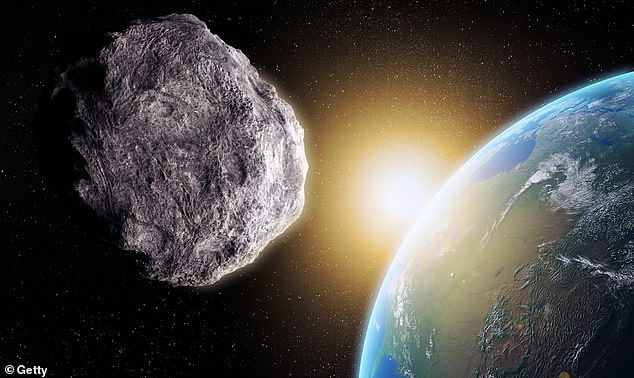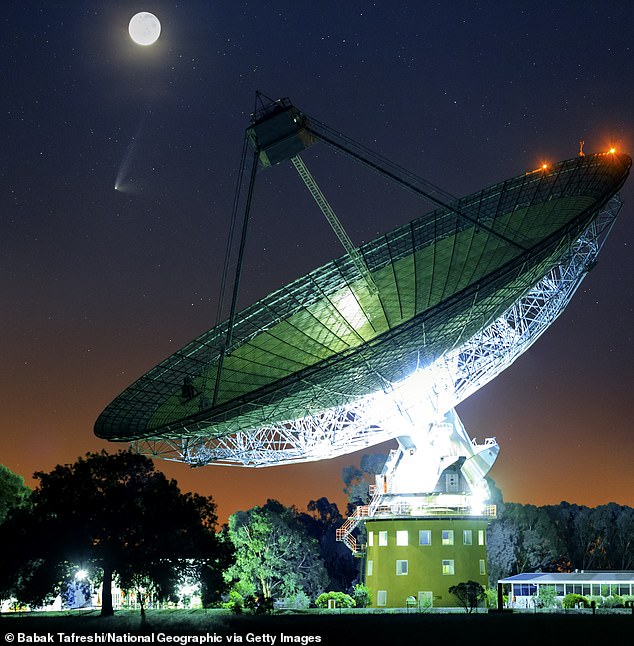An asteroid the size of the Leaning Tower of Pisa has been spotted just days before it screams past Earth in the latest near-miss astronomers have tracked.
NASA has announced that asteroid 2025 OW is expected to pass within 393,000 miles of Earth on Monday, July 28.
It’s actually one of five asteroids NASA’s Jet Propulsion Laboratory (JPL) making a close pass by Earth over the next week.
Two other asteroids, both between 100 and 200 feet long, are projected to miss Earth by more than a million miles on Thursday. Another small asteroid is expected to pass our planet on Saturday.
However, 2025 OW is the largest of this ominous group and will also come much closer to striking the planet on Monday.
The space rock has been measured to be approximately 210 feet long, making it comparable to a 15-story building or a large airplane.
Its projected distance of 393,000 miles would put it just beyond the moon, which orbits Earth 239,000 miles away.
While NASA has said that 2025 OW poses no risk at this time, they noted asteroids of this size could cause minor structural damage or shatter windows if it were to enter the atmosphere over a populated area.

An asteroid the size of the Leaning Tower of Pisa is expected to come within 400,000 miles of Earth on Monday, July 28 (Stock Image)
Astronomers categorize 2025 OW as a small to medium-sized asteroid, meaning it’s not a ‘planet-killer’ which would cause an extinction-level event on Earth.
This type of asteroid generally explodes in the atmosphere and doesn’t reach the Earth’s surface due to the intense frictional heating and pressure placed on the rock as it enters at high speeds.
Scientists said 2025 OW is traveling at about 47,000 miles per hour, which is about an average speed for a near-Earth asteroid (NEA).
For comparison, the 500-foot asteroid 2024 MK was traveling at roughly 34,000 mph when it came within 184,000 miles of Earth last July.
Meanwhile, the worryingly large, 1,100-foot 99942 Apophis is traveling at 67,000 mph and is expected to come within 20,000 miles of Earth on April 13, 2029.
At just 210 feet in length, it won’t be visible with the naked eye or through binoculars when it reaches its closest point from the Earth.
When it comes to tracking potentially dangerous asteroids, NASA’s calculations are typically right on the money, meaning a major error that brings 2025 OW on a collision course with us unlikely.
NASA JPL’s Center for Near-Earth Object Studies (CNEOS) uses ground-based telescopes and planetary radar systems like the Goldstone Solar System Radar to detect and track asteroids. These systems measure an asteroid’s position, velocity, and brightness to determine its orbit and size.

NASA has been tracking five asteroids expected to pass without incident this week, including 2025 OW (Stock Image)
While NASA is staying on top of these smaller asteroids in view, scientists have recently raised alarm about dangerous objects coming at our planet from our stellar ‘blind side.’
A recent study warned that Venus blocks out our view of many near-Earth asteroids – large space rocks that cross or come near Earth’s orbit – setting up the potential for a devastating impact no one sees coming.
Researchers from Brazil, France, and Italy found that several asteroids in sync with Venus’s orbit are extremely hard to spot because they’re often hidden by the sun’s glare.
Three in particular, 2020 SB, 524522, and 2020 CL1, have orbits that take these asteroids dangerously close to Earth.
The three asteroids flying along with Venus measure between 330 and 1,300 feet in diameter, making each one capable of leveling entire cities and setting off massive fires and tsunamis.
